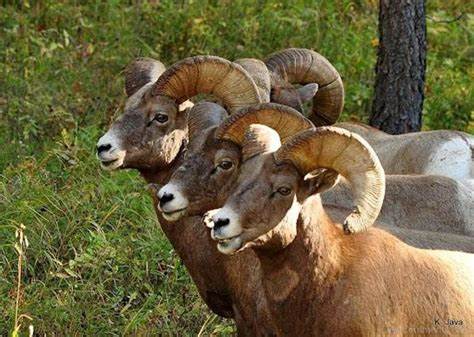(animal:dlwjz04xrs0= ram) Rams, the male counterparts of sheep, are fascinating creatures known for their strength, distinctive horns, and important role in agriculture. This article delves deep into the world of rams, exploring their biology, behavior, significance, and much more. By understanding these animals, we can appreciate their contributions to ecosystems and human society.
The Biology of Rams
(animal:dlwjz04xrs0= ram) Rams belong to the species Ovis aries, domesticated sheep, and are characterized by their robust build and prominent curved horns. These horns, made of keratin, grow throughout the ram’s life and are used in dominance displays and battles for mating rights. Rams typically weigh between 100 and 350 pounds, depending on breed and environmental factors.
Ram Varieties and Breeds
(animal:dlwjz04xrs0= ram) There are numerous breeds of rams, each with unique characteristics. Some popular breeds include the Merino, known for its fine wool; the Suffolk, recognized for its meat quality; and the Bighorn sheep, famous for its impressive horn size and wild nature. These breeds have been developed over centuries to meet specific agricultural needs.
Habitat and Distribution
Rams are highly adaptable and can be found in various habitats, from mountainous regions to plains. Wild rams, such as the Bighorn sheep, thrive in rugged terrains where they can evade predators. Domesticated rams are commonly found on farms and pastures worldwide, contributing significantly to agricultural economies.
The Role of Rams in Agriculture
(animal:dlwjz04xrs0= ram) In agriculture, rams are primarily used for breeding purposes. Their genetic traits are crucial for producing healthy and productive offspring. Selective breeding has allowed farmers to enhance desirable traits such as wool quality, meat yield, and disease resistance in sheep populations.
Ram Behavior and Social Structure
(animal:dlwjz04xrs0= ram) Rams exhibit fascinating social behaviors, particularly during the mating season. They engage in head-to-head battles to establish dominance and secure mating rights. These fights, though intense, rarely result in serious injury due to the rams’ thick skulls and horns designed to absorb impact.
Mating and Reproduction
(animal:dlwjz04xrs0= ram) The breeding season, known as the rut, sees rams compete vigorously for ewes. Successful rams mate with multiple females, ensuring the propagation of their genes. After a gestation period of about five months, ewes give birth to lambs, which inherit the genetic traits of their fathers.
Diet and Feeding Habits
(animal:dlwjz04xrs0= ram) Rams are herbivores, primarily grazing on grasses, herbs, and shrubs. In domesticated settings, their diet is often supplemented with grains and hay to ensure they receive adequate nutrition. Proper feeding is essential for maintaining their health and reproductive capabilities.
Health and Disease Management
(animal:dlwjz04xrs0= ram) Maintaining the health of rams is vital for their productivity. Common health issues include parasites, foot rot, and respiratory diseases. Regular veterinary care, proper nutrition, and good management practices are essential for preventing and treating these conditions.
Rams in Culture and Symbolism
(animal:dlwjz04xrs0= ram) Rams have been significant in various cultures and mythologies throughout history. In ancient Egypt, the ram-headed god Khnum was associated with creation and fertility. In astrology, Aries, the ram, represents leadership and determination. Rams symbolize strength, virility, and protection in many traditions.
Conservation of Wild Rams
(animal:dlwjz04xrs0= ram) Conservation efforts are crucial for protecting wild ram populations, such as the Bighorn sheep, which face threats from habitat loss, disease, and climate change. Various organizations work to preserve their habitats, implement disease management programs, and promote awareness about their ecological importance.
Rams in Modern Research
(animal:dlwjz04xrs0= ram) Rams are also subjects of scientific research, particularly in genetics and reproductive biology. Studies on ram genetics help improve breeding programs and enhance understanding of hereditary diseases. Research on their reproductive systems aids in developing better livestock management practices.
Ram Wool and Its Uses
(animal:dlwjz04xrs0= ram) One of the most valuable products from rams is wool. Ram wool is used in the textile industry to produce clothing, blankets, and other fabric products. Merino wool, in particular, is highly prized for its softness and warmth, making it a staple in high-quality apparel.
Meat Production and Quality
(animal:dlwjz04xrs0= ram) Rams contribute to meat production, with lamb being a popular choice in many cuisines. The quality of ram meat is influenced by factors such as breed, diet, and age. Lamb is known for its tenderness and flavor, making it a sought-after product in the culinary world.
Training and Handling Rams
Proper training and handling are crucial for managing rams, especially in agricultural settings. Rams can be aggressive, particularly during the rut, so handlers must use techniques that ensure safety for both the animals and themselves. Training can include acclimating rams to human presence and using gentle handling methods.
Economic Importance of Rams
Rams play a significant role in the economy, particularly in rural areas where sheep farming is prevalent. They contribute to the livelihoods of farmers by providing wool, meat, and breeding stock. The economic impact of rams extends to industries such as textiles, agriculture, and food production.
Rams and Ecological Balance
Rams and sheep play a role in maintaining ecological balance. Their grazing habits help manage vegetation and prevent overgrowth, which can reduce wildfire risks. Additionally, their presence supports biodiversity by providing food for predators and contributing to nutrient cycling in ecosystems.
Educational and Recreational Opportunities
Rams also offer educational and recreational opportunities. Farms and zoos often feature rams in their exhibits, providing visitors with a chance to learn about these animals. Educational programs and petting zoos help foster a connection between people and animals, promoting conservation and responsible animal care.
Challenges in Ram Management
Managing rams presents various challenges, including health issues, aggressive behavior, and environmental factors. Farmers and handlers must be well-equipped with knowledge and resources to address these challenges effectively. Continuous learning and adaptation are key to successful ram management.
Innovations in Ram Breeding
Innovations in technology and breeding techniques have revolutionized ram breeding. Artificial insemination, genetic testing, and selective breeding have improved the quality and productivity of ram populations. These advancements help meet the growing demand for wool, meat, and breeding stock.
The Future of Rams in Agriculture
The future of rams in agriculture looks promising, with ongoing research and technological advancements driving progress. Sustainable farming practices, improved breeding programs, and better health management will continue to enhance the productivity and welfare of rams.
Rams and Climate Change
Climate change poses challenges to ram populations, particularly in terms of habitat loss and altered food availability. Adaptation strategies, such as developing resilient breeds and protecting habitats, are essential for mitigating the impacts of climate change on rams and ensuring their survival.
Conclusion
In conclusion, rams are remarkable animals with a rich history and significant contributions to agriculture, culture, and ecosystems. Understanding their biology, behavior, and importance helps us appreciate their role in our world. As we continue to advance in technology and knowledge, the future for rams looks bright, promising a continued legacy of strength and productivity.







